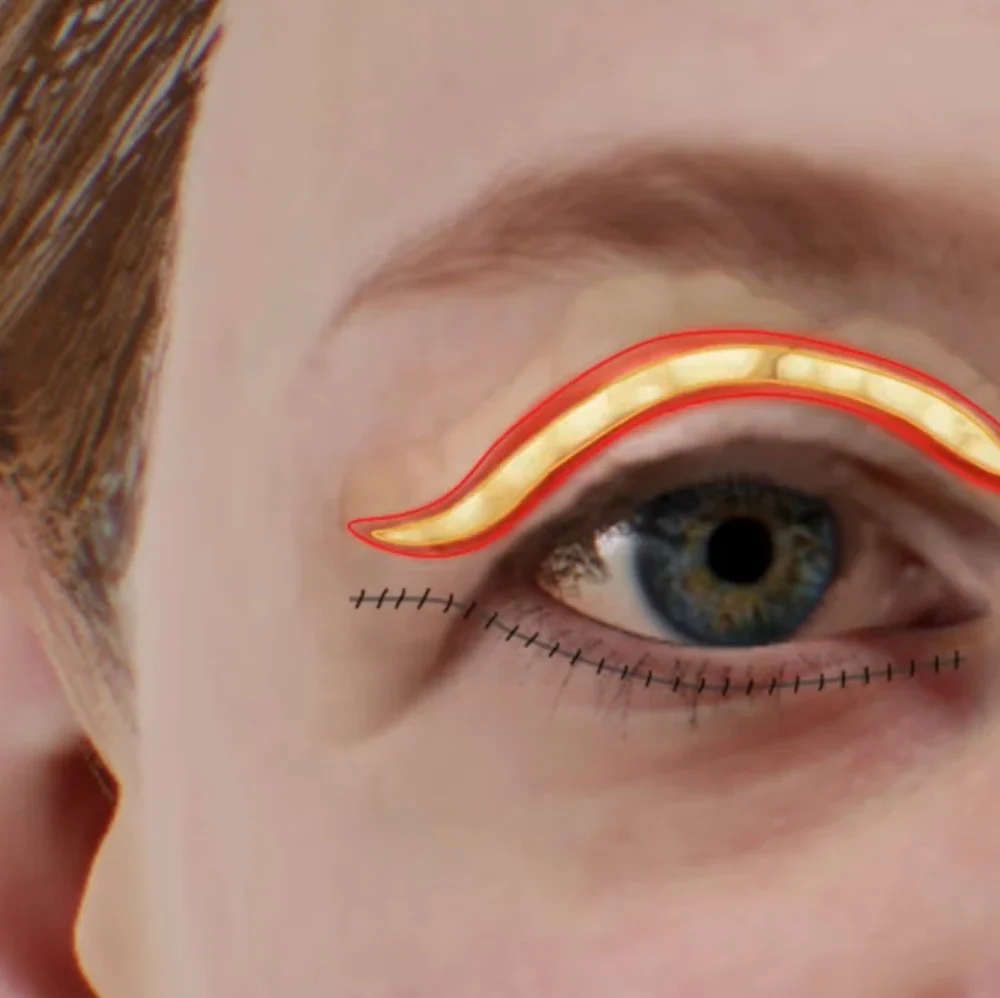
Are droopy eyelids making you look tired, older, or even interfering with your vision? Eyelid surgery, or blepharoplasty, is a popular cosmetic and functional procedure designed to refresh the area around your eyes. But before scheduling your consultation, it’s essential to understand if you’re a suitable candidate. This guide will walk you through the candidacy criteria, required evaluations, common myths, and smart ways to prepare for your first surgeon appointment.
What Is Eyelid Surgery (Blepharoplasty) and Why Consider It?
Eyelid surgery, medically known as blepharoplasty, removes excess skin, muscle, and sometimes fat from the upper and/or lower eyelids. It’s one of the most common cosmetic surgeries, with benefits that go beyond mere aesthetics.
Key benefits of eyelid surgery include:
- A more youthful, refreshed appearance
- Improved field of vision (when sagging skin obstructs sight)
- Increased self-confidence
Although often performed for cosmetic reasons, blepharoplasty can also be medically necessary if droopy eyelids affect your vision or eye health.
Candidacy Criteria for Eyelid Surgery
Are you wondering, “Am I eligible for eyelid surgery?” Here’s what medical professionals look for when determining candidacy.
Age and General Health
- Typical Age Range: Most candidates are over 35, as aging is the main cause of eyelid sagging. However, genetics or hereditary factors can make younger individuals suitable as well.
- Health Status: You should be in good general health. Chronic conditions like uncontrolled diabetes, bleeding disorders, or heart problems may increase surgical risks.
- Nonsmokers Preferred: Smoking impedes healing and increases the risk of complications, so many surgeons prefer candidates who don’t smoke or are willing to quit in advance.
Realistic Expectations
Set attainable goals. Blepharoplasty can rejuvenate your look and help with vision problems caused by sagging lids, but it won’t make you look like someone else or halt the aging process entirely.
Common Eyelid Concerns Addressed
You may qualify for eyelid surgery if you have:
- Loose or sagging skin that creates folds or hides the natural contour of the eyelid
- Fatty deposits causing puffiness in the upper or lower lids
- Bags under the eyes, even after restful sleep
- Drooping lower eyelids showing white beneath the iris
- Difficulty seeing due to sagging skin
The Importance of a Comprehensive Medical Evaluation
Even if you meet the above criteria, a detailed medical evaluation is required before proceeding with eyelid surgery.
What Does the Medical Evaluation Include?
1. Eye Exam
Your eye health is paramount. An ophthalmologist or oculoplastic surgeon will assess:
- Visual acuity (how well you see)
- Peripheral vision (especially if eyelid drooping affects your sight)
- Tear production and dry eye risk
2. Medical History Review
Be transparent about all medical conditions, treatments, allergies, and previous surgeries. Don’t forget to mention over-the-counter supplements or herbal medicines, as some can impact clotting.
3. Photographs
Surgeons often take standardized before-and-after photos to assess eyelid issues objectively and document medical need for insurance purposes (if applicable).
Why is this process important?
Your general and eye-specific health determine your eligibility and risk factors. Some eye disorders or medical conditions could increase the chance of complications, while others may require special preparation or post-operative care.
Psychological Assessment and Emotional Readiness
Eyelid surgery, like all cosmetic procedures, involves more than just physical change.
- Motivation Matters: Are you seeking surgery to please yourself or someone else? Are you aware of what the surgery can and can’t achieve?
- Mental Health Check: Conditions such as body dysmorphic disorder or unrealistic beauty standards need to be discussed openly with your provider.
A reputable surgeon will ensure you’re mentally and emotionally prepared, helping to prevent post-surgical disappointment.
Debunking Common Myths About Eyelid Surgery Qualifications
Accurate information helps you set expectations and make the best choice. Here are a few prevalent myths:
Myth 1: Blepharoplasty Is Only for the Elderly
Reality: Genetics or certain medical conditions lead some younger patients to require eyelid surgery for functionality or aesthetics.
Myth 2: Any Eye Doctor Can Clear You for Surgery
Reality: It’s essential that your surgeon is an experienced oculoplastic or board-certified plastic surgeon with extensive eyelid surgery experience. Your pre-surgical eye exam should be thorough and tailored to surgical safety.
Myth 3: You Don’t Need to Worry About Your General Health
Reality: General health and lifestyle (smoking, alcohol use, medications) impact surgical outcomes, so optimal overall health is crucial for minimizing complications.
Myth 4: Eyelid Surgery Completely Stops the Aging Process
Reality: Blepharoplasty creates lasting results but doesn’t prevent future aging. Skin will continue to age naturally over time.
Myth 5: Cosmetic Eyelid Surgery Is Never Medically Covered
Reality: If sagging eyelids obstruct your vision, your health insurance may cover upper blepharoplasty for functional (not purely cosmetic) reasons, provided you meet medical necessity criteria.
Preparing for Your Eyelid Surgery Consultation
Going to your first consultation? Preparation is key to making the most of your visit.
Questions to Ask Your Surgeon
- Am I a good candidate for upper or lower blepharoplasty, or both?
- What results can I realistically expect?
- What are the risks and benefits, based on my specific case?
- How much downtime is typical, and what does post-surgical care involve?
- Are there alternatives to surgery that might be appropriate?
- How much experience do you have with eyelid surgery?
- Can you show me before-and-after photos of similar patients?
Tips for Your Consultation
- Bring a list of medications and supplements.
- Have photos of your eyelids from different angles if your issue sometimes “comes and goes.”
- Be open and honest about your expectations and concerns.
Setting Realistic Expectations for Blepharoplasty
No cosmetic procedure is a magic fix. Here’s how to approach your decision with clarity.
Understanding Your Likely Results
- Eyelid surgery can dramatically refresh your appearance, but you’ll still look like yourself.
- Scars are generally minimal and fade over time.
- Improvements to vision (when relevant) are often noticeable soon after healing.
Recognizing Limitations and Potential Complications
- Blepharoplasty cannot remove crow’s feet or lift drooping eyebrows (other treatments may be necessary).
- Risks, while rare, include infection, dry eyes, difficulty closing eyes, or uneven appearance.
- A second procedure may sometimes be needed for optimal results.
Transparency with your surgeon is crucial for a safe and satisfying experience.
FAQs
What to Do Next if You’re Considering Eyelid Surgery
Considering blepharoplasty is a personal decision that benefits from accurate information and expert input. Use this guide to assess your suitability, prepare for consultations, and debunk misleading myths. For the best and safest experience, always consult with a board-certified specialist who regularly performs eyelid procedures. Your unique anatomy, health status, and goals determine not only your eligibility but also your ultimate satisfaction with the results.
Take the next step by booking a professional consultation to discuss your options, clarify your goals, and understand exactly what to expect. Your journey to brighter, more refreshed eyes can begin today—with knowledge and confidence.

Beth is Cloudmineinc’s senior health editor and a certified personal trainer. She has over 10 years experience as a science journalist and is the author of two books. She deadlifts over 315 lbs.